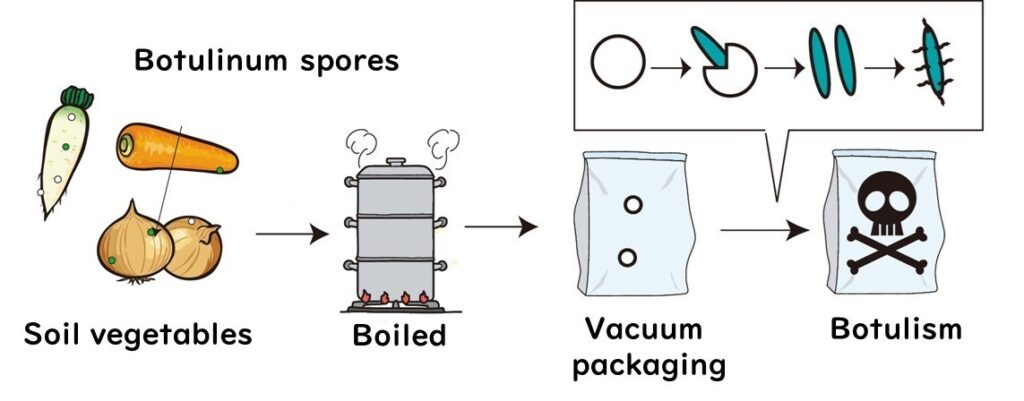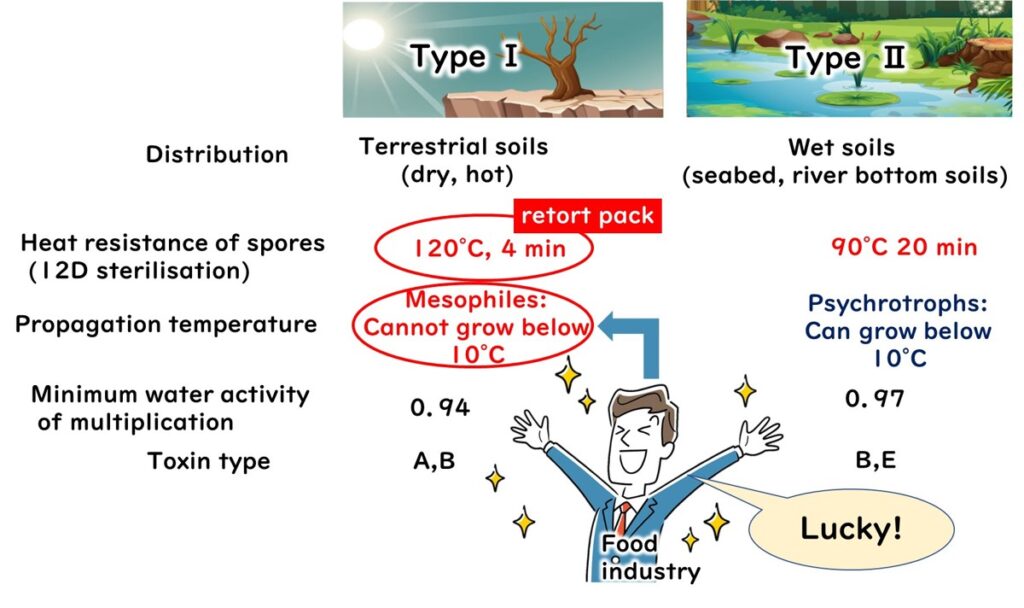Clostridium botulinum, the bacterium behind the infamous botulinum toxin, stands out as both a scientific curiosity and a major concern in food microbiology. Known for producing the world's most potent biological toxin, this microorganism poses critical challenges for food safety professionals. Why does it create such a deadly toxin? How does it persist in common foods? In this blog, we explore the bacterium's survival strategies, the foods most at risk, and the distinctions between its toxin-producing types. Whether you’re a microbiology student or a food industry expert, uncover essential insights into this remarkable yet alarming microbe and its implications for food safety.
Clostridium botulinum Basics: Habitat, Characteristics, and Survival Mechanisms
Before diving deeper into the complexities of Clostridium botulinum, it's helpful to revisit the foundational concepts of Gram staining and microbial properties. These basics, available in a related article on our blog, provide a strong starting point for understanding the bacterium’s unique features and behaviors. Like a chain reaction in dominoes, each piece of knowledge connects seamlessly to the next.
Gram Staining and Microbial Properties: A Comprehensive Overview

Key Characteristics of Clostridium botulinum
1.Where It Lives: Clostridium botulinum thrives in soil, its natural habitat, which is crucial to understanding its resilience and adaptability.
2. Gram Positive Identity: As a Gram-positive bacterium, it has a thick peptidoglycan layer in its cell wall, a feature commonly found in soil-dwelling microbes.
3.A Notorious Food Poisoner: Its classification as a Gram-positive bacterium aligns with its role as a producer of toxin-related food poisoning.
4.Growth Temperature: A fascinating trait of C. botulinum Type I is its inability to grow at low temperatures, such as those in a refrigerator. This makes it an exception among many environmental bacteria. This characteristic is especially significant for food safety regarding packaged foods.
5.Survival Skills: Like Bacillus cereus, C. botulinum forms heat-resistant spores capable of surviving boiling temperatures, extreme dryness, and nutrient scarcity.
6.Oxygen Needs: As an obligate anaerobe, it thrives in oxygen-free environments. Bacteria within the genus Clostridium are distinguished by their inability to tolerate oxygen.
7.Acid Resistance: This bacterium can survive in acidic conditions with a pH as low as 4.6, a factor we'll discuss further in the context of microbial control.
8.Detecting the Bacterium: Identifying C. botulinum in food samples requires heating the samples and culturing them in oxygen-free conditions to encourage its growth.
These points connect like dominoes, each one building on the last to give a clearer understanding of Clostridium botulinum. With this foundation in place, let’s delve deeper into its fascinating properties and food safety implications.

Botulinum Toxin: The Deadliest Neurotoxin in Food Microbiology
Did you know that Clostridium botulinum produces the most potent neurotoxin known in biology? Remarkably, just 4 kilograms of this toxin could theoretically wipe out the entire human population. While this may sound like a plot from a science fiction novel, it’s a stark reality in the field of microbiology.

What Makes Botulinum Toxin So Deadly?
The answer lies in its interaction with our nervous system. Under normal circumstances, nerve cells communicate through specialized junctions called synapses. Botulinum toxin disrupts this communication by blocking the release of neurotransmitters at these synapses. This disruption prevents nerve signals from reaching muscles, leading to paralysis. If the muscles involved in breathing are affected, the consequences can be fatal.

A Closer Look at the Toxin and Its Types
The term "botulinum" refers to the anaerobic, Gram-positive, spore-forming bacterium responsible for producing this toxin. Scientifically, botulinum toxin is a protein classified into seven types based on its antigen-antibody reactions: A, B, C, D, E, F, and G. Among these:
- Types A, B, and E are the most common causes of foodborne botulism in humans.
- Type F is associated with rare cases of food poisoning.
It’s important to note that these classifications refer to the type of toxin produced, not the physiological characteristics of the bacteria themselves. Understanding these differences, particularly between C. botulinum Types I and II, is vital for food safety and will be discussed in detail later.
Which Foods Are at Risk of Botulism?
Clostridium botulinum, a soil-dwelling bacterium, can contaminate various vegetables such as carrots, radishes, onions, and potatoes. These vegetables, when boiled, may seem safe, but here’s the catch: boiling kills most microbes, yet the heat-resistant spores of C. botulinum can survive.
How Vacuum-Packed Foods Increase the Risk
When these boiled vegetables are vacuum-packed, the risk of botulism—a severe type of food poisoning—increases significantly. Vacuum-packing inhibits the growth of other spore-forming bacteria, such as those in the Bacillus genus, creating an environment where C. botulinum spores can thrive under favorable conditions.

The Ubiquity of C. botulinum Spores
It’s not just soil-harvested vegetables that harbor these spores. C. botulinum spores are potentially everywhere, even in soil-derived dust that settles on everyday surfaces.

Imagine, there might even be spores on your desk as you read this article!

However, before you start worrying excessively, it’s important to note that swallowing spores doesn’t necessarily lead to illness in healthy adults. The competitive environment within a well-balanced gut microbiome prevents C. botulinum spores from germinating and producing toxins. While the exact mechanism isn’t fully understood, it’s believed that these spores can’t outcompete the diverse bacterial community in a healthy intestine.

The Exception: Infant Botulism
Infants under one year old are an exception. Their immature gut flora creates a conducive environment for C. botulinum spores to germinate, multiply, and produce toxins. This can lead to infant botulism, a serious and potentially life-threatening condition in young babies.

Type I vs. Type II Botulinum Bacteria: Key Differences and Food Safety Implications
When exploring the world of Clostridium botulinum, the bacterium responsible for producing botulinum toxin, it’s essential to understand the differences between its two main types: Type I and Type II. These distinctions are not merely academic labels but represent critical differences in behavior and characteristics that directly impact food safety.

Proteolytic vs. Non-Proteolytic Behavior
- Type I: Known as "proteolytic," meaning it breaks down proteins.
- Type II: Classified as "non-proteolytic," meaning it does not break down proteins.
While these terms are often mentioned in textbooks, the more significant factors for food safety are the spore heat resistance and the growth temperatures of these bacteria.
Key Characteristics of Type I and Type II Bacteria
Type I Bacteria
- Growth Temperature: These mesophilic bacteria do not grow below 10°C.
- Spore Heat Resistance: Highly heat-resistant spores require sterilization at 120°C for 4 minutes (an F-value of 4) to reduce bacterial counts from 10¹² to 1.
- Food Safety Implications: Stringent sterilization is mandatory for retort-processed foods stored at room temperature.
Type II Bacteria
- Growth Temperature: These bacteria thrive in chilled conditions, growing at temperatures below 10°C.
- Spore Heat Resistance: Less heat-resistant spores are destroyed at 90°C in about 20 minutes.
- Food Safety Implications: This trait makes Type II a major concern for chilled packaged foods.
Implications for the Food Industry
The contrasting characteristics of Type I and Type II C. botulinum have significant implications for food manufacturing and safety protocols:
- Type I bacteria, due to their inability to grow at refrigeration temperatures, allow for the development of flavorful chilled foods without requiring harsh heat treatments.
- Type II, however, necessitates careful monitoring in chilled food environments to prevent contamination.
Why Does Clostridium botulinum Produce Such a Deadly Toxin?
Let’s step back from the practical aspects of food microbiology and consider an intriguing question: Why does Clostridium botulinum produce a toxin that’s so lethal to humans and animals? It’s one of nature’s fascinating mysteries.
A Toxin with Broad Reach
Botulinum toxin is not unique in targeting humans. For example, it’s not uncommon to hear about large numbers of birds found dead near lakes. Here’s what often happens:
- Fish decay in oxygen-depleted environments, such as the guts of dead fish.
- This creates conditions where C. botulinum spores, present in the mud at the bottom of lakes or rivers, germinate and multiply.
- These bacteria produce botulinum toxin, which contaminates the decaying fish.
- Birds feeding on the contaminated fish ingest the toxin and can succumb to its effects.
This shows that botulinum toxin is not specifically designed to harm humans. Rather, its effects are indiscriminate, impacting various creatures in the natural world.

The Unanswered Question
So why does C. botulinum produce this toxin in the first place? Despite decades of research, the exact reason remains unclear. Some scientists speculate that the toxin might provide a competitive advantage in its natural environment, potentially helping the bacterium inhibit other microorganisms or predators. However, this remains a hypothesis.
The production of botulinum toxin is one of those compelling questions in microbiology that reminds us how much we still have to learn about the natural world.

